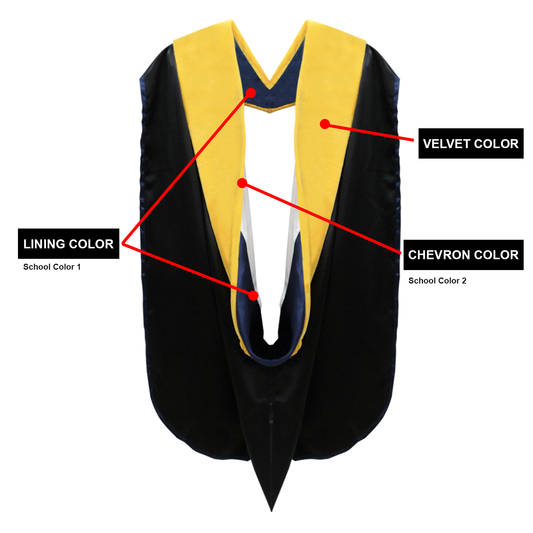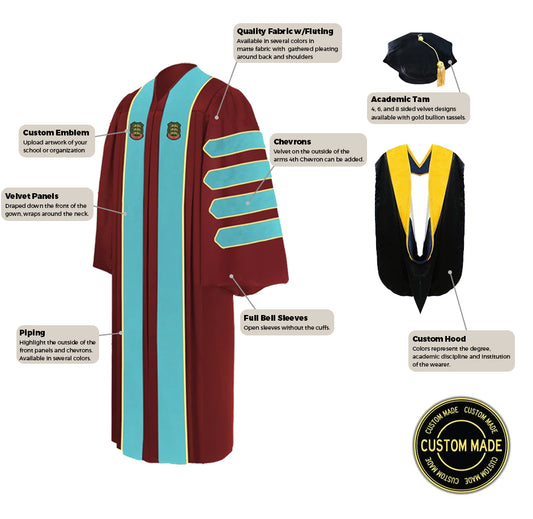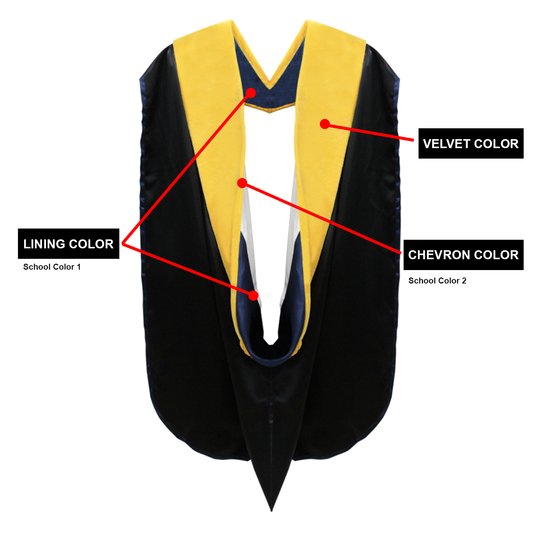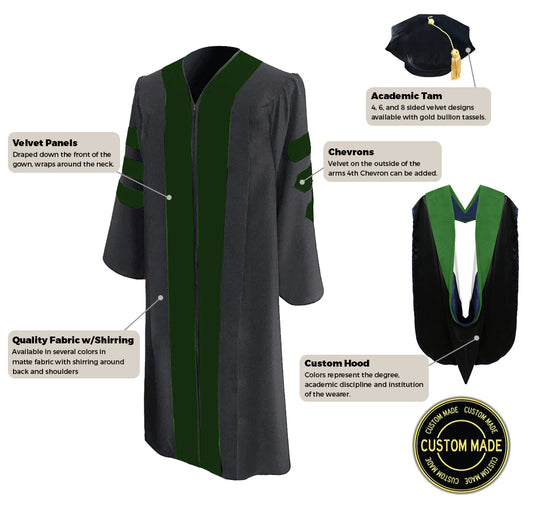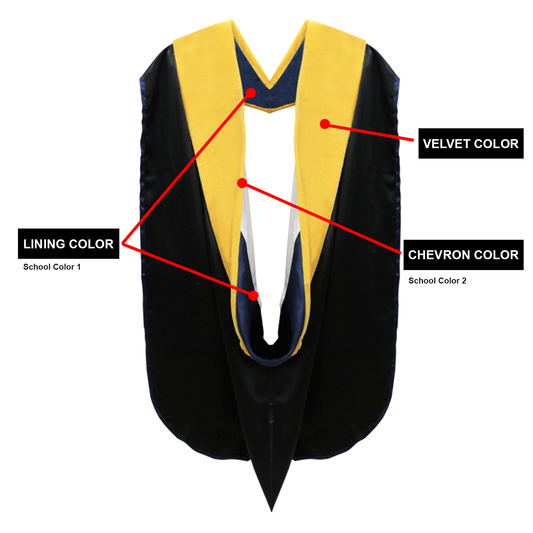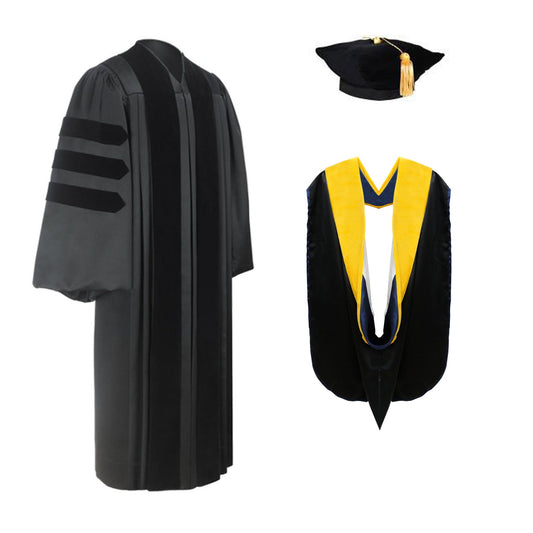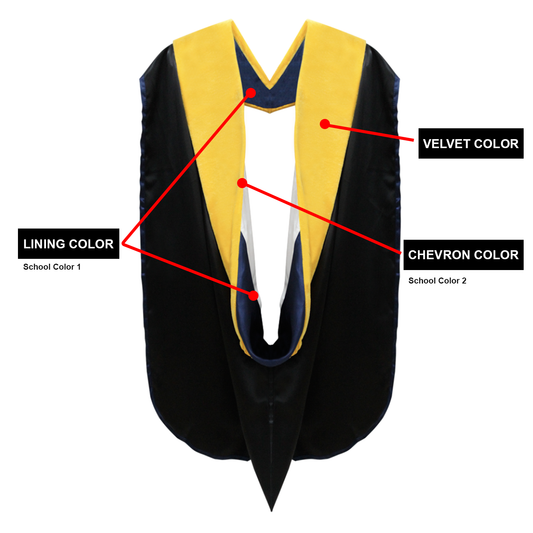-

About Us
Learn moreAcademicHoods.com provides excellent custom service and knowledge and provides our products with the highest quality Academic Regalia.
-
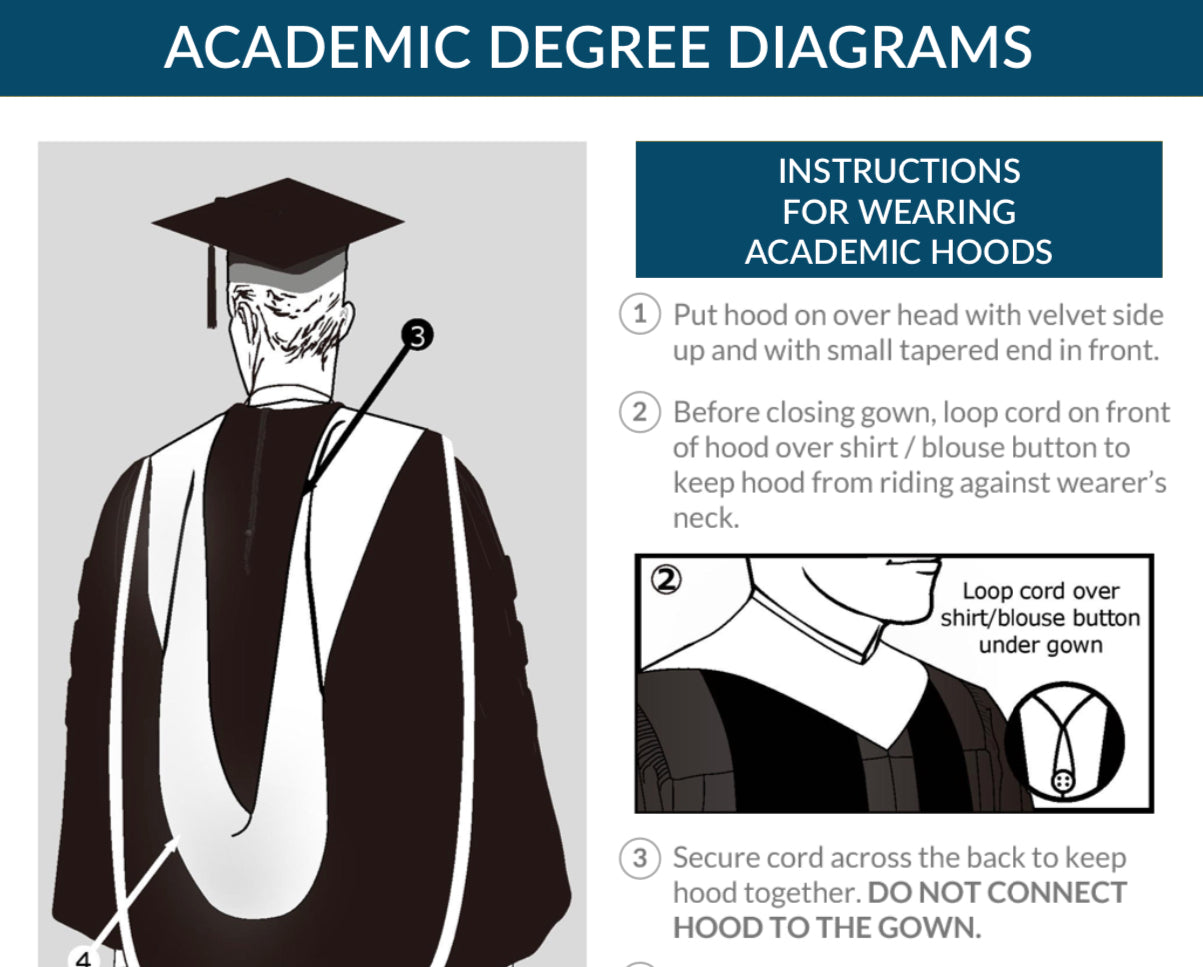
How to Wear
Learn moreWe have videos & downloadable instructions that will make it easy for you to dress correctly on your graduation day.
-

Featured Products
-
Deluxe Doctoral Graduation Custom Hood - Academic Regalia - Custom Your Own
MSRP List price $59.95MSRP -
Custom Doctoral Graduation Tam, Gown and Hood Package - Doctorate Regalia
MSRP List price $528.95MSRP -
Custom Classic Doctoral Gown, Tam and Hood Package
MSRP List price $398.95MSRP -
Deluxe Doctoral Graduation Tam, Gown & Hood Package
MSRP $228.95MSRPUnit price per$229.95Sale price $228.95Sale

About Academic Hoods for Graduation
Academic hoods trace their history back to the medieval time period. There were colorful silk hoods and fur-lined hoods that were worn by academics in the 16th century. They became associated with learned people since hoods had mostly fallen out of fashion after window glazing became common among laymen in the 15th century.
The length and shape of the hood itself are designed to show the level of education the wearer has received. For example, a bachelor’s hood has a “simple” design, meaning it only has a cow and liripipe (tail,) and was only three feet in length. The master’s hood, was similar, but had a liripipe of four feet in length. Due to its high cost and low prestige, it was often omitted from academic dress – a tradition that continues today.
Standardizing Graduation Hoods
The Intercollegiate Code was one of the first documents used to standardize academic hoods. It initially stated that the hood should be edged with either stain, silk or velvet – in a special color that would show the degree title of the wearer, as it appears on their diploma.
This lining was originally intended to be no wider than six inches. However, over time some major universities stipulated a width of no more than four inches. Below shows the standard velvet sizes.
- Velvet edging 2 inches wide for bachelor’s hoods
- Velvet edging 3 inches wide for master’s hoods
- Velvet edging 5 inches wide for doctoral hoods
We have adopted these standards. Velvet is the most often-used material, as it provided a good contrast to the softer, silken material and complemented other design aspects of the doctoral gown.
However, as there were hundreds of different educational institutions in the US, it became difficult to assign a unique lining pattern for the hood.
For all academic purposes, including trimmings of doctors' gowns, edging of hoods, and tassels of caps, the colors associated with the different disciplines are as follows:
| Degree | Color |
| Agriculture | Maize |
| Arts, Letters, Humanities | White |
| Commerce, Accountancy, Business | Drab |
| Dentistry | Lilac |
| Economics | Copper |
| Education | Light Blue |
| Engineering | Orange |
| Fine Arts, including Architecture | Brown |
| Forestry | Russet |
| Journalisme | Crimson |
| Law | Purple |
| Library Science | Lemon |
| Medicine | Green |
| Music | Pink |
| Nursing | Apricot |
| Oratory (Speech) | Silver Gray |
| Pharmacy | Olive Green |
| Philosophy | Dark Blue |
| Physical Education | Sage Green |
| Public Administration, including Foreign Service | Peacock Blue |
| Public Health | Salmon Pink |
| Science | Golden Yellow |
| Social Work | Citron |
| Theology | Scarlet |
| Veterinary Science | Gray |





